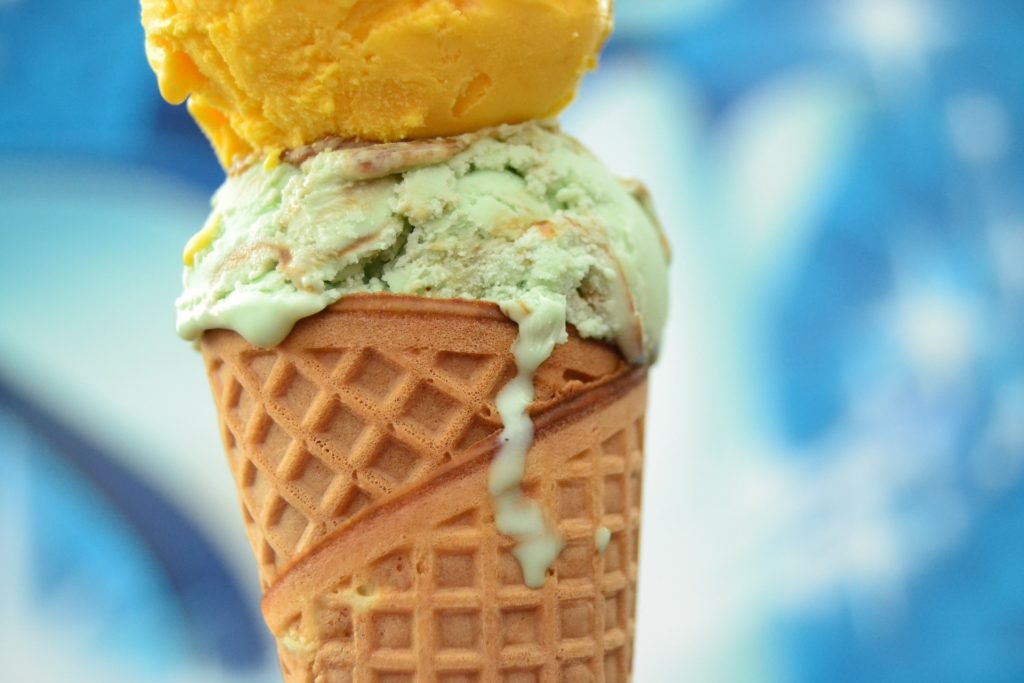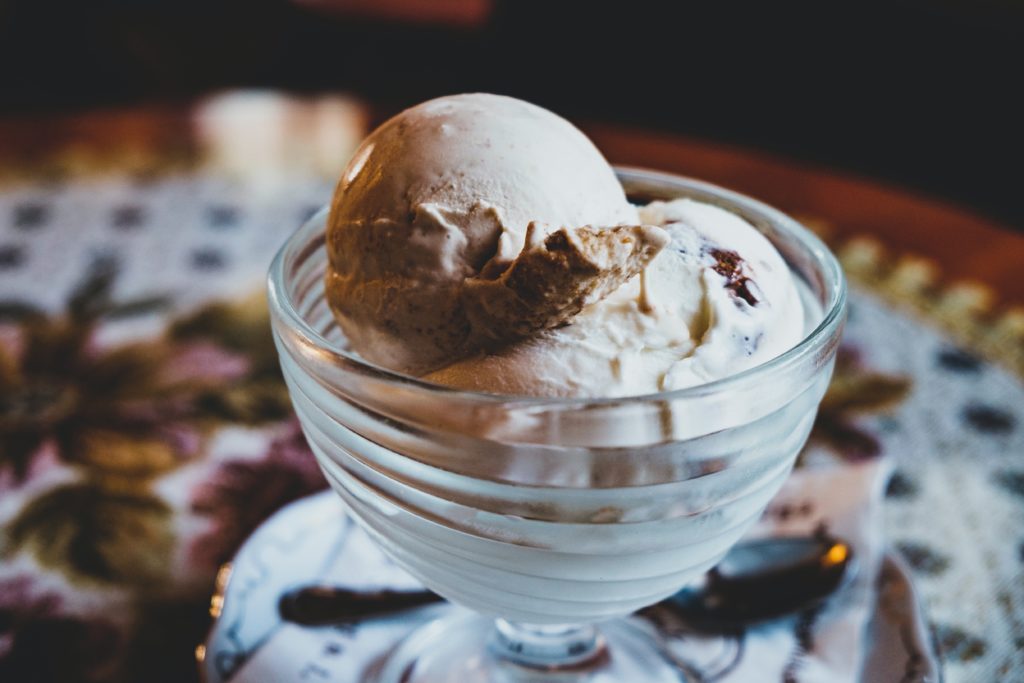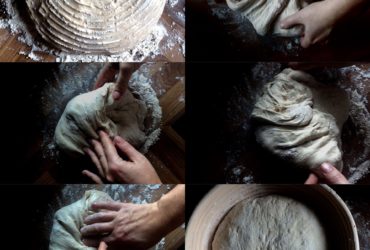By Abbey Thiel
Ice cream is one of my favorite topics. Not only because ice cream is obviously delicious, but it was also the subject of my PhD research. Yes, you can study ice cream to earn a PhD!
But, what I want to talk about today is some of the ingredients you might not recognize in ice cream. If you turn a pint of ice cream over to look at the ingredient statement, you’ll notice ice cream isn’t simply iced cream.
Spotting those unfamiliar ingredients
 Photo by Julia Kuzenkov from Pexels
Photo by Julia Kuzenkov from Pexels
As a loyal ice cream enthusiast, I usually have several cartons in my freezer at all times. Currently, I have two brands— Ben and Jerry’s and Blue Bunny— with me. Let’s check out the ingredient statement on these two products.
We of course have some obvious ingredients like cream, milk, sugar and corn syrup. Those ingredients are the first few listed, but reading on, there are also some unfamiliar ones.
First looking at the pint of Ben and Jerry’s, I spotted soy lecithin, guar gum, and carrageenan. Unless you’re a food scientist, you’ve likely never heard of these ingredients and may not be sure why they’re needed.
From a science perspective, these ingredients can be grouped into two categories. Lecithin is called an emulsifier while guar gum and carrageenan are known as hydrocolloids or thickeners.
Now, moving onto the carton of Blue Bunny. Scanning the ingredient statement, I found an even longer list of unfamiliar ingredients including soy lecithin, mono & diglycerides, tara gum, guar gum, carrageenan, locust bean gum, and cellulose gum
Again, what’s interesting is that these ingredients are either categorized as emulsifiers or hydrocolloids. So there is a theme to these ingredients.
I always like to say, no ingredients are just thrown into your food for fun. There are very specific reasons we have emulsifiers and hydrocolloids in ice creams.
So, why are hydrocolloids added to ice cream?

Image by SilviaEmilie from Pixabay
As an ingredient, hydrocolloids are incredibly useful because they thicken up foods— add viscosity— even when used in small amounts. For this reason, you’ll see hydrocolloids in foods ranging from salad dressing to ice cream.
Including hydrocolloids in ice cream is sort of like buying an insurance policy for when ice cream is temperature abused. Whenever ice cream warms up, whether that’s by sitting in your grocery store cart or a freezer door is ajar, it begins to melt. Once back at colder temperatures, the ice will again refreeze.
The only problem is, this pattern of melt and refreeze makes the ice crystals grow larger and larger. Once the ice crystals reach a certain size, our mouth can perceive the iciness and the ice cream no longer feels smooth and creamy.
To prevent this unpalatable texture change, hydrocolloids are added to ice cream.
As I mentioned, hydrocolloids will thicken the ice cream, which adds body to the frozen dessert. But perhaps more importantly, hydrocolloids are known for inhibiting ice crystal growth.
And even if large ice crystals are present in the ice cream, hydrocolloids can mask our perception of these crystals. This means the ice cream retains a smooth texture even if it has been temperature abused.
Another perk of using hydrocolloids is that they slow down how fast your ice cream melts. That’s because even once the ice has melted, the viscosity added by the hydrocolloid helps ice cream keep its structural integrity.
Although there’s a whole slew of hydrocolloids used in the food industry, some of the most common ones in ice cream include: locust bean gum, guar gum, cellulose gum, and carrageenan. All these hydrocolloids come from plant sources such as trees, bushes, and algae.
Alright, what about emulsifiers?

Photo by Krisztina Papp from Pexels
Now, to ingredients like soy lecithin and mono & diglycerides.
As I mentioned, these ingredients would be categorized as emulsifiers. Emulsifiers are small molecules where one half prefers to interact with water and the other half wants to be by oil. This unique structural feature means that emulsifiers are really good at bridging together water and oil (which typically wouldn’t want to be by each other).
Since ice cream is made from cream, it contains both fat and water, so adding an emulsifier can keep everyone happy.
But, beyond helping to bridge the oil and water phases, emulsifiers play another important role in creating ice cream’s characteristic texture.
In cream, the little spheres of fat are surrounded by milk proteins. These proteins act like a puffy winter jacket. When two spheres come into contact, they bounce off of each other.
But, when emulsifiers are added, they kick off the proteins and surround the little spheres of fat themselves. Since emulsifiers are much tinier than proteins, the fat is no longer protected with a puffy coating.
Now, when two spheres of fat run into each other, they stick together and partially merge. What ends up developing is hundreds of tiny spheres of fat that are partially merged, or sort of holding hands with one another, which creates large fat networks.
And it turns out this fat network is what lends ice cream some of its most beloved and important features.
The presence of these fat networks lends ice cream a greater amount of creaminess. Since the networks lend the product a lot of strength, they also help prevent your ice cream from melting rapidly.
So without the addition of the emulsifiers, like lecithin and mono/diglycerides, we would never get the ideal structure of ice cream which greatly impacts its taste and texture.
_ _ _
I know when it comes to processed and mass-produced food, ingredient statements can get overwhelming really quickly. Not only are they long, but also full of ingredients you’re unfamiliar with.
Even something as simple as ice cream, which we assume should just be iced cream, needs some additional ingredients to help the food remain stable and high quality for its entire shelf (which is usually months, if not a year).
I hope this illustrates that no ingredients are just thrown into food for fun.
Every ingredient, even the unfamiliar ones, serve a specific purpose. Now, when you spot a hydrocolloid or emulsifier in your ice cream, you can rest assured it’s there for an important reason, and of course, you now know those reasons.

Abbey Thiel | Linkedin
SMF Blog Writer
Abbey discovered that food science was a real major while attending University of Wisconsin-Madison, and quickly transferred into the department. After graduating with a B.S. in food science, she decided to stay in Madison to pursue her PhD. Her research explores the fat network found within ice cream, and yes, there’s lots of ice cream parties! If not found sitting at a microscope for extended amounts of time, Abbey enjoys the great Midwestern sport of log rolling (Google it) and laughing really loud. She is also very busy passing on her passion for food science to her two-year-old niece, whose favorite color is bacon and has hopes of growing up to be soup.






Leave a Reply